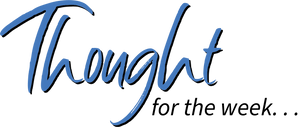Conversations about bias are not new, but there has been a more recent trend addressing the implicit biases that we develop naturally through the experiences we have, the experiences we don’t have, how we interpret our experiences, and what we learn from others. Biases influence what we believe about people and what happens to and around us. They influence our expectations, interpretations, and interactions with others, including our students.
Biases are invisible yet omnipresent. They subtly and persistently influence how we see and engage with our students, and as an extension, they can shape how our students experience learning in our classrooms. Our biases can influence our students’ emotional state and psychological development, and they can hold the potential to undermine our efforts and our students’ learning. Let’s explore five of the most common biases that haunt our classrooms and how we can counter them.
Expectancy bias. Also known as the Pygmalion Effect, this bias allows our perceptions of students’ potential to drive what we expect, how we support, and how we evaluate the work and behavior of students. Multiple research studies have shown this bias to have a significant effect on how well students learn and perform. This may be good news for students whom we perceive to be talented, but it is very bad news for students we perceive as having low potential. Expectancy bias can also influence student behavior. Students whom we perceive as well behaved can more easily be given extra chances and the benefit of the doubt, while students perceived as mischievous, sneaky, or otherwise prone to misbehavior are often blamed and punished more frequently and harshly.
How to counter: We can avoid expectancy bias by having high expectations for all students and not allowing past performance to shape our beliefs about their future potential. We might commit to supporting all students to build their potential. We can also focus on individual student progress rather than comparing the performance of some students to others.
Gender bias. This bias involves different perceptions about female and male students. As examples, girls are assumed to share characteristics such as being more likely to demonstrate good behavior and skills in reading and writing but not being as likely to demonstrate strong skills in math and science. Boys are seen as more prone to mischief and leadership roles and not as strong in communication and relationships. While there may be some natural gender-related tendencies present, girls and boys share more characteristics than not. Girls commonly demonstrate strengths and interests often attributed to boys, and boys often excel in areas that are perceived to favor girls.
How to counter: We can start by being conscious of the language we use, the assumptions we make, and the behaviors we practice that reinforce gender labels. We might make it a point to balance opportunities for participation, responsibilities, and leadership. Further, we can encourage and support students—regardless of gender—to enroll and excel in a wide variety of academic and career-related subjects.
Stereotype bias. Socioeconomic status, ethnic background, race, and other factors can play a role in how we see and interact with our students. We may hold lower expectations for these students’ learning and expose them to less rigorous curricular content. We may make negative assumptions about their likely behavior and commitment to learning. We may even press them less to perform than we do for other students.
How to counter: We can regularly check ourselves and our beliefs to be certain that we are not expecting or supporting these students’ learning less than that of our other students. We can focus on each student as an individual, value their strengths, and support their growth. We also need to review instructional materials and resources to avoid reinforcing stereotypes and to ensure positive models for learning.
Affinity bias. We sometimes encounter students with whom we feel a stronger than usual sense of connection. We may share similar personalities, backgrounds, interests, or even certain life challenges. Even without consciously deciding to do so, we can give these students more attention, encouragement, support, and positive feedback than other students. While the students who experience our affinity may benefit, other students often pick up on what they see as favoritism. As a result, they can feel unseen, ignored, or even disliked, and those can lead to feelings of resentment; meanwhile, the student who is the object of our affinity can experience separation, teasing, and jealousy from classmates.
How to counter: Being aware of our feelings and the consequence of showing favoritism is a good start. We might also be careful to provide equitable feedback and attention to all students. We could even go as far as collecting data on our interactions to ensure an equitable distribution exists among all students.
Confirmation bias. When we have a preferred approach or have done something in a certain way for some time, we can assume that it is the best way to do it, even when there is evidence that other approaches work better, at least in some circumstances. Equally challenging, when trying alternative approaches and strategies, we can find ourselves paying closest attention to information that supports what we expect rather than objectively evaluating evidence. Confirmation bias can leave us clinging to practices that are not effective or that are not as effective as other options and approaches.
How to counter: Commit to having current practices prove themselves. Start with an expectation that a different approach might be better, and collect evidence in an attempt to prove it. Allow the evidence, rather than pre-existing beliefs, to determine the outcome. However, be certain to practice the alternative approach long enough to become proficient before making a judgment.
Biases can be destructive, but they are not inevitable—and we are not helpless to them. We can educate and equip ourselves to understand and overcome their presence and their impact. Our commitment to our students can be the motivating force.















